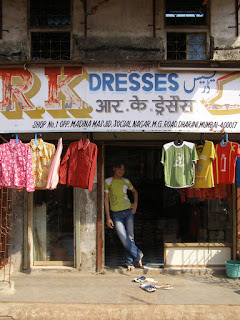
ITS AMAZING HOW YOU CAN GET TO KNOW A PLACE USING ALL YOUR SENSES AND NOT ONLY THE SIGHT
 Construction of a slum in the backyard of the faculty, getting materials form everywhere, carring them and contructing in any possible way. Some planification before but almost everything was improvised.
Construction of a slum in the backyard of the faculty, getting materials form everywhere, carring them and contructing in any possible way. Some planification before but almost everything was improvised.

 Social Nagar started at 1978. The earliest inhabitants were social outcasts like drunkards and gamblers. The inhabitants named their community “Social Nagar” because “Social” suggest progression. They are hoping for a progressive community in Dharavi.
Social Nagar started at 1978. The earliest inhabitants were social outcasts like drunkards and gamblers. The inhabitants named their community “Social Nagar” because “Social” suggest progression. They are hoping for a progressive community in Dharavi. The early inhabitants of Social Nagar started constructing their houses in mud on simply living in tents. Gradually they go for more long – lasting materials like wood. Then, sturdy blocks of asbestos and cement appears in the 80´s. corrugated metal sheets that are used for roofing are made partitions. The settlements evolved into brick houses. All of them have electric connections. Some of them even have air - conditioning systems installed.
The early inhabitants of Social Nagar started constructing their houses in mud on simply living in tents. Gradually they go for more long – lasting materials like wood. Then, sturdy blocks of asbestos and cement appears in the 80´s. corrugated metal sheets that are used for roofing are made partitions. The settlements evolved into brick houses. All of them have electric connections. Some of them even have air - conditioning systems installed.






 In the morning the street is full, by children that are going to school, persons going to their jobs and all the truks that distribute different items to the shops.
In the morning the street is full, by children that are going to school, persons going to their jobs and all the truks that distribute different items to the shops.


 You can find a big market, public toilets, temples, shops and restaurants "hotels"
You can find a big market, public toilets, temples, shops and restaurants "hotels"